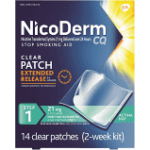Are-Both-Sides-Right Blogging for Business

“Are both sides right?” asks veterinarian Carrie Donahue, writing in Good Health magazine, alluding to the debate about whether dogs should be on a raw diet or a conventional one. The raw camp emphasizes raw or lightly cooked meat, including organ meat and bones. The conventionalists are concerned about bacteria in raw meat and the threat of choking on bones.
The author concludes by saying that regardless which method is chosen, supplementation is important, going on to offer tips on which supplements help a dog have a healthy coat and skin, and which are beneficial for a pet’s brain, eyes, and heart..
Whether the topic of your blog marketing efforts is plumbing, pets, or pharma, the content itself needs to use opinion. It’s opinion, after all, that clarifies what differentiates your business, your professional practice, or your organization from its peers. This Good Health article, takes a slightly different approach – airing both sides of a debate.
At Say It for You, I train content writers to reveal their unique “slant” or philosophy within their field. That way, I explain, potential customers and clients feel they know who you are, not merely what you do, and they are more likely to want to be associated with you.
For that very reason, one important facet of my job as a content writer is to “interview” business owner and professional practitioner clients, eliciting each one’s very individualized thoughts. The Carrie Donahue article about pet food suggests an alternate approach – present both sides of the story to readers. When you clarify and put into perspective both sides of a thorny issue within your industry or profession, you’re performing a valuable service for readers.
On the other hand, I have observed, whether you’re blogging for a business, for a professional practice, or for a nonprofit organization, there needs to be a slant on the information you’re serving up for readers. In other words, blog posts, to be effective, can’t be just compilations; you can’t just “aggregate” other people’s stuff and make that be your entire blog presence.
There’s value in Are-Both-Sides-Right blog posts, no doubt, as Carrie Donahue so effectively demonstrates in this article. In the big picture, however, I have to conclude that, to achieve the status of “thought leader” and inspire action, business blog posts will need to involve taking one side of an issue, not both.





Follow us online!